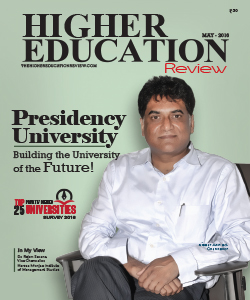Top 25 Private/Deemed University Survey 2016
Apart from being the leading technology giants in the world, there is something else that cannot be unseen in companies such as Google, Microsoft, Adobe, Cognizant, Sandisk, Nokia and NetApp. It does not pertain to their services or market share, but something that is linked with individuals who lead these prestigious organizations. All of them are helmed by CEOs of Indian origin. Sundar Pichai, Satya Nadella, Shantanu Narayen, Francisco D'Souza, Sanjay Mehrotra, Rajeev Suri and George Kurian; they are all of Indian descent and have achieved fame, glory and success across the globe.
The technology sector has been the biggest platform for Indians to display their talent and capabilities. Studies show that there are more Indian CEOs than any other nationality after Americans in S&P 500 companies. While India continues to play its vital role among the countries that produce great human resources to drive the world economy, there is a common consensus that good education, technical expertise, ability to work in difficult situations and managerial skills help Indians achieve great strides in the global arena. But, in India, do we really get a good education? If the answer is a yes, then why do Indian higher educational institutions fail to make their mark in the global rankings?
While the absence of Indian institutes in the global rankings has become recurrent theme, a majority of our academicians do not consider Indian higher educational institutions as bad as the global rankings make them out to be. Indeed, they claim that, it is the global ranking systems that have loaded with methodological flaws and therefore unable to capture each country's ground realities. The main objection is that global rankings do not adequately reflect the existence of a broad spectrum of institutions with very different missions, incommensurable resources and of varying sizes. For instance, major rankings agencies like Times Higher Education and Quacquarelli Symonds consider multiple performance indicators ranging from the number of research papers produced and the number of citations those papers received to the international faculty and international student ratio. In India, with growing number young population and their appetite for higher education, the universities focus more on teaching as many people as possible rather than creating a knowledge base or superior research facilities. However, the purpose of any rankings on higher education is to measure the performance of an institution and provide students, academicians, employers and all other stakeholders with information on which institutions offer the best quality of education. Thus, despite procedural imperfections, global rankings do more than benchmark performance.
Looking to the future, it is evident that given the increasing internationalization of higher education and the competitive pressures on institutions, the debate on rankings will continue. However, we at The Higher Education Review Magazine value the positive impacts that a comprehensive ranking mechanism can create on a higher education system and therefore release our latest edition of 'Top 25 Private/Deemed Universities in India Survey 2016.' Here, we understand that India's best Universities are run by the Government; but the smartest universities that are emerging are doing so in the private sector. Hence, we provide assistance to the large community of students in India and enable them to choose the very best for themselves, by ranking the Top 25 Private/Deemed Universities in India every year.
Survey Methodology
Identifying the Top 25 Private/Deemed Universities in India is a sophisticated exercise in information-gathering and analysis: here we detail the criteria used to assess the country's greatest private universities. The primary aim of this survey is to help students make informed comparisons of Private/Deemed Universities around the country. Based on various performance indicators, the rankings are designed to assess universities in five major areas: Academic Excellence, Infrastructure, Placement, University Background and Alumni Factor.

